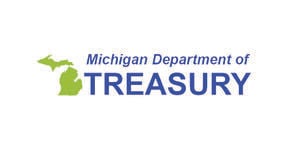
MI Student Aid Team Offers Seven Financial Aid Best Practices Tips
LANSING, Mich. – As Michiganders prepare for the upcoming fall semester and start paying their college tuition bills, the Michigan Department of Treasury’s MI Student Aid Team is asking students and their families to be alert and informed when considering student loans.
“Michigan students and families cover a considerable amount of their higher education costs,” State Treasurer Rachael Eubanks said. “When student borrowers become their own financial advocate, they can better understand how to manage and leverage the financial aid they receive. Please carefully consider only accepting those loans that are needed. The choices made by students today will have outcomes later in life.”
To make the best decision regarding student loans, the MI Student Aid team recommends seven best practices when considering student loans:
- Complete the Free Application for Federal Student Aid (FAFSA). Colleges use information from the FAFSA to determine their financial aid awards. By completing and submitting the FAFSA, students maximize all their financial aid options.
- Understand loans must be repaid. Not all financial aid included in a financial aid award letter is free money. Many financial aid awards will include federal student loans. Unlike grants and scholarships, loans must be repaid with interest.
- Check the amount of interest being offered on a loan before accepting it. Federal student loans, Parent Loan for Undergraduate Students (PLUS) loans, and private loans have varying interest rates and repayment terms. Before taking out loans, students should identify and compare each loan’s interest rate and then accept the loans with the best interest rates and repayment terms.
- Only accept the amount you will need. Students can either turn down a loan or request a smaller loan amount, and the financial award letter should include instructions on how to do this.
- Be aware of loan scams. In a typical student loan scam, a scammer will ask for banking information from a student searching for loans. The scammer typically claims they will use the information to make a direct deposit into the student’s account in return for upfront fees paid through gift cards. Instead, the scammer accesses the student’s banking account and withdraws funds.
- Visit the school’s financial aid office once a semester. Even though students may not have to begin repaying their loans while they are in school, students should not wait to understand their responsibilities. Students should know the status of their college’s or university’s student account and keep track of the types of aid they receive. By making this a habit, students can avoid overborrowing and stay within their budget.
- Create a studentaid.gov account. The studentaid.gov website, managed by the U.S. Department of Education, is a one-stop shop for managing federal student aid. With a studentaid.gov account, students can track their federal student loans, check the interest rate of each one, and total interest accumulated to date. Students can also look over different repayment options, estimate monthly payments and learn who their loan servicer is for when repayment begins.
Individuals nationwide have nearly $1.6 trillion in outstanding student loan debt, according to the Federal Reserve Bank of New York.
For more information, go to https://www.michigan.gov/mistudentaid or contact MI Student Aid at mistudentaid@michigan.gov, 1-888-447-2687, or on Facebook, Twitter, and Instagram.














